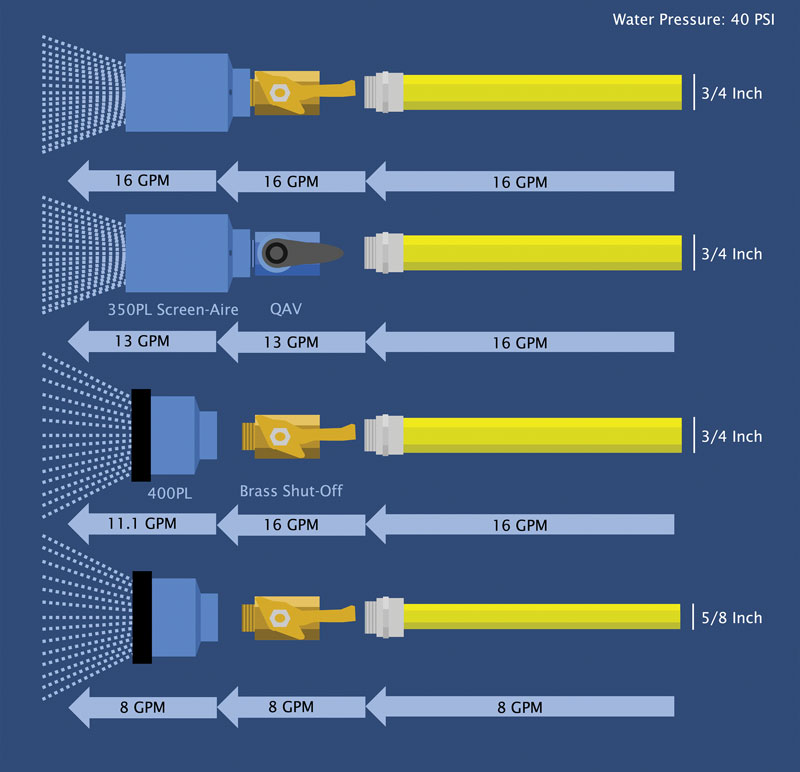6/1/2024
Up Your Irrigation Game
Noah Becker

Time management in the greenhouse has always been a paramount concern. With nationwide labor shortages affecting every industry, it’s incredibly important to optimize the efficiency of day-to-day greenhouse operations.
Dramm offers many ways to automate irrigation, however, there are other simple, cost-effective solutions that can be implemented first. Choosing the right watering tools can have a major impact on irrigation labor. By choosing high-flow waterbreakers, valves and hoses, watering time can be drastically cut down.
Different waterbreakers supply different flow rates based on the number of holes within the output of the nozzle. Fewer, larger holes means a higher volume of water in a shorter period of time. For instance, the 1000PL Water Breaker puts out 8 gallons per minute (gpm) at 40 PSI, while the 350PL Screen-Aire provides up to 18 gpm at the same pressure. This means that the 350PL can put out the same amount of water as the 1000PL in less than half the time.
However, increasing flow rate is a careful balance. While a higher flow nozzle will allow you to water plants faster, the increased volume will result in larger droplets. This is often too harsh for early stage growing. The 350PL Screen-Aire does provide a high level of aeration due to its intake holes, which pull air in as water moves through (Figure 1). However, this much water may generally be too much for younger plants. Once plants mature, they have the strength to endure a higher flow and a root system that requires more water. Making the switch at this stage is key to improving watering efficiency.
Watering equipment is like tools in a tool box. Different tools will work best for different jobs. Optimizing the use of those tools in the right way can save you both time and labor.
Valve/hose: It’s important to note that a nozzle is the end of the pipeline, therefore, the potential flow of any given waterbreaker is only as good as the system that precedes it. Those previous components need to provide the appropriate flow. For instance, for a 10-gpm nozzle to put out that amount of water, the hose and valve must both have a capacity of at least 10 gpm. So, when upgrading any equipment, make sure to consider all parts involved.
Determining ideal water saturation time: If you decide to implement higher flows within your watering, water saturation time also needs to be considered. Different plants and media require different volumes of water to reach an ideal level of saturation. After changing your flow rate, reaching this point will require a shorter amount of time. Thus, it’s important to re-evaluate how long each plant needs to be irrigated. This watering period can be easily determined by measuring out different volumes of water over varied durations of time. Then water separate pots with the different measurements to determine the ideal volume and watering interval. GT
Noah Becker is a marketing and sales associate for Dramm.